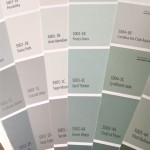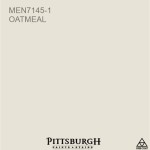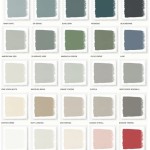What Colour to Paint Timber Fence: A Comprehensive Guide
Selecting the appropriate colour for a timber fence is a crucial decision that impacts the overall aesthetic of a property. Beyond mere visual appeal, the chosen colour can influence the perceived size of a garden, complement the architectural style of a home, and even affect the longevity of the fence itself. This article aims to provide a comprehensive guide to navigating the intricacies of timber fence colour selection, examining various factors that contribute to making an informed and visually satisfying choice.
The existing landscape, including the plants, flowers, and other natural elements, plays a significant role in determining the ideal fence colour. A well-coordinated colour palette will enhance the beauty of the surrounding flora and create a harmonious outdoor environment. Consider the colour of the soil, the foliage of trees and shrubs, and the hues of any existing hardscaping features, such as patios or walkways. The goal is to choose a colour that complements these elements rather than clashing with them.
The architectural style of the house and the surrounding buildings should also be carefully considered. A modern home might benefit from a sleek, contemporary fence colour, whereas a traditional home may be better suited to a more classic and understated hue. Certain architectural styles, such as Victorian or Colonial, often have historically appropriate colour palettes that can be used as a starting point for fence colour selection.
Practical considerations, such as the amount of sunlight the fence receives and the desired level of maintenance, should also influence the decision. Darker colours tend to absorb more heat, which can potentially lead to increased expansion and contraction of the timber, potentially impacting its lifespan. Lighter colours reflect sunlight and may require less frequent cleaning, as dirt and grime are often less noticeable. The local climate and weather conditions should also be factored into the equation.
Understanding Colour Psychology and Its Impact
Colour psychology delves into the effects that different colours have on human emotions and perceptions. Understanding these effects can be beneficial when choosing a fence colour. For instance, green is often associated with nature, tranquility, and harmony, making it a suitable choice for creating a serene and relaxing outdoor space. Blue evokes feelings of calmness, peace, and stability, and can be a good option for fences near water features or in coastal environments. Neutral colours, such as white, grey, and beige, provide a sense of sophistication, elegance, and versatility, allowing them to blend seamlessly with various architectural styles and landscapes. Red, orange, and yellow are energetic and vibrant colours that can add a touch of excitement and personality to a garden, but they should be used sparingly and with careful consideration to avoid overwhelming the surrounding environment.
The psychological impact of colour extends beyond individual emotions. It can also influence the perceived size and shape of a space. Lighter colours tend to make spaces appear larger and more open, while darker colours can create a sense of intimacy and enclosure. When choosing a fence colour, consider the desired effect on the perceived size of the garden. If the goal is to make a small garden appear larger, lighter colours are a more suitable choice. Conversely, if the aim is to create a cozy and private outdoor retreat, darker shades may be more appropriate.
Furthermore, colour can affect the perceived temperature of a space. Warm colours, such as red, orange, and yellow, are associated with heat and energy, while cool colours, such as blue, green, and purple, evoke feelings of coolness and tranquility. Depending on the local climate and the desired ambiance, choose a fence colour that complements the overall thermal experience of the outdoor space. In warmer climates, cooler colours may be preferable, while in cooler climates, warmer colours can add a touch of comfort and warmth.
Exploring Popular Fence Colour Options
The market offers a diverse range of fence colour options, each with its unique characteristics and aesthetic appeal. White remains a classic and versatile choice, providing a clean, crisp, and timeless look. It complements a wide range of architectural styles and landscapes, and it can create a sense of spaciousness and light. However, white fences tend to require more frequent cleaning, as dirt and grime are readily visible.
Grey is another popular option, offering a sophisticated and modern aesthetic. It is a neutral colour that blends well with various architectural styles and landscapes, and it can create a sense of calmness and tranquility. Grey is available in a wide range of shades, from light greys to dark charcoals, allowing for customization and flexibility. Charcoal grey fences offer a contemporary and dramatic look that complements modern homes and minimalist landscapes.
Brown, in its various shades, is a natural and earthy colour that blends seamlessly with the surrounding environment. It evokes feelings of warmth, comfort, and stability, making it a suitable choice for creating a welcoming and inviting outdoor space. Different shades of brown can evoke different moods and styles. Darker browns offer a more traditional and rustic look, while lighter browns provide a more contemporary and airy feel.
Green fences are becoming increasingly popular, as they blend seamlessly with the surrounding foliage and create a sense of harmony with nature. Different shades of green can evoke different emotions and styles. Darker greens offer a more sophisticated and elegant look, while lighter greens provide a more cheerful and refreshing feel.
Other colour options, such as blue, black, and even bold accent colours, can be considered for those seeking a more unique and personalized look. Blue fences can evoke feelings of calmness and tranquility, while black fences can add a touch of drama and sophistication. Bold accent colours, such as red, orange, or yellow, can be used to add a pop of personality and excitement to a garden, but they should be used sparingly and with careful consideration to avoid overwhelming the surrounding environment.
Factors Affecting Colour Durability and Longevity
The durability and longevity of a fence colour are influenced by several factors, including the type of paint or stain used, the quality of the application, and the environmental conditions to which the fence is exposed. Choosing a high-quality paint or stain specifically designed for exterior use is crucial for ensuring optimal colour retention and protection against weathering. These products typically contain UV inhibitors that help prevent fading and discoloration caused by sunlight, as well as mildewcides that prevent the growth of mold and mildew.
Proper surface preparation is also essential for ensuring the longevity of the fence colour. Before applying any paint or stain, the timber should be thoroughly cleaned to remove any dirt, grime, or loose paint. Sanding the surface can also help to create a smooth and even finish, which will improve the adhesion of the paint or stain. For previously painted fences, it may be necessary to scrape off any peeling or chipping paint before applying a fresh coat.
The application method can also affect the durability of the fence colour. Applying multiple thin coats of paint or stain is generally preferable to applying one thick coat, as this allows for better penetration and adhesion. The use of a primer can also help to improve the adhesion of the paint or stain and provide additional protection against moisture. Follow the manufacturer's instructions carefully for the recommended application method and drying times.
Environmental factors, such as sunlight, rain, and temperature fluctuations, can also impact the longevity of the fence colour. Fences that are exposed to direct sunlight for extended periods of time are more likely to experience fading and discoloration. Fences in areas with high rainfall or humidity are more susceptible to mold and mildew growth, which can also affect the appearance of the colour. Regular maintenance, such as cleaning and re-staining or painting, can help to prolong the life of the fence colour and keep it looking its best.
Furthermore, the type of timber used for the fence can influence the lifespan of the paint or stain. Some timber species are more porous than others, which can affect the absorption and retention of the colour. It is important to choose a paint or stain that is compatible with the type of timber used for the fence. For example, some paints are specifically formulated for use on cedar or redwood, while others are better suited for pressure-treated lumber.
In summary, selecting an appropriate fence colour involves careful consideration of the surrounding landscape, architectural style, personal preferences, and practical factors. Understanding colour psychology and its impact can help in making a decision that enhances the overall aesthetic of the property and creates a visually pleasing outdoor environment. By choosing high-quality materials, preparing the surface properly, and providing regular maintenance, the longevity and durability of the fence colour can be maximized, ensuring years of enjoyment.

Choosing The Right Colour For Your Fence Makeovers

Top 10 Wonderful Timber Fence Colors For 2025 Pentagon

Timber Fence Painting Makeovers Respraying Experts

Top 10 Wonderful Timber Fence Colors For 2025 Pentagon

Top 10 Wonderful Timber Fence Colors For 2025 Pentagon

Timber Fence Painting Makeovers Respraying Experts

Choosing The Right Colour For Your Fence Makeovers

How To Paint Your Wooden Fence Paintway

What Is The Best Fence Paint Colour Shed

Which Fence Paint Is Best Top 5 Paints
Related Posts








